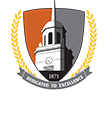Our Office
The Civic and Community Engagement Office is a one stop destination to get involved with the community. With curricular and co-curricular activities, we connect students, faculty, and staff with schools, government agencies, non-profit organizations, and other community partners to learn, grow, and create change around key social justice and community priorities.
The Civic and Community Engagement Office advances the urban-engaged anchor mission of Buffalo State by providing curricular and co-curricular learning opportunities, developing civic skills, and building reciprocal community partnerships that promote equity and address community-identified priorities.
The CCE will be a national leader in community engagement and partnerships known for:
•coordinating high-quality, reciprocal collaborations with local, regional, national, and international community-based organizations that impact our students, the institution, and the community
•encouraging and supporting individuals to become active members of their community who address social injustices and advocate for systemic change through civic engagement, volunteering, and community-engaged learning courses.
•providing and supporting innovative curricular and co-curricular learning and research that connects campus and community
Committee Leadership
Kim Barron, Assistant Vice President, Institutional Effectiveness & Planning
Victoria Cirillo, Senior Staff Assistant, Civic & Community Engagement Alan Delmerico, Community Health Behavior Scientist, Center for Health and Social Research Carol DeNysschen, Dean, School of Professions
Ruth Goldman, Associate Professor, Communication
Joy Guarino, Director, Global Engagement
Denise Harris, Director, Career & Professional Education Luke Haumesser, Associate Director, Student Leadership and Engagement Brian Kantz, Creative Services Director, Marketing and Communications
Lisa Kragbé, Assistant Director, Civic & Community Engagement Luke Krieg, Professor, Sociology
Susan McCartney, Director, Small Business Development Center Kathleen McNerney, Chair and Associate Professor, Speech-Language Pathology
Kristen Mruk, Special Assistant to the Provost and Senate
Wendy Paterson, Dean, School of Education
Scott Propeack, Interim Executive Director, Burchfield Penney Art Center
Laura Hill Rao, Director, Civic & Community Engagement
Sarah Reid, Campus Planner, Campus Planning
Mehwish Sarwari, Assistant Professor, Political Science, Public Administration, & Planning Julie Setele, Senior Assistant Librarian, Butler Library Desiray Slaughter, Graduate Assistant, Civic & Community Engagement
Alice Villaseñor, Associate Director, Civic & Community Engagement
Amitra Wall, Interim Provost, Academic Affairs
A community advisory committee can be an important resource for departments, programs, and units across campus. Experts from the community can inform academic or co-curricular programs, help to ensure your program remains dynamic and current, and serve multiple important and beneficial purposes including
- providing important insight and guidance re. curriculum and community-engagement opportunities;
- acting as resources for bringing experts into the classroom and assisting students with career exploration;
- advocating for your program and students by expanding recruitment outreach in diverse communities;
- sponsoring program events and supporting other fundraising efforts.
Organizing a Community Advisory Committee
- Identify and articulate goals and expectations of the committee (What do you want the group to accomplish?).
- Plan logistics including
- how many members (8-12) and whom you can identify to present a diversity of perspectives;
- how often the group will meet (2-3 times/year) and for the number of years each member will be asked to commit;
- who is facilitating and how will the meetings be structured.
- The facilitator should
- articulate the responsibilities in the performance plan or service responsibilities and ensure there is adequate time to devote to management;
- consider a community person or alumnus as the facilitator;
- identify any professional development necessary for the facilitator, e.g. facilitation skills, cultural competence, and time management.
- Recruit members and consider retention strategies for membership.
- Ensure a diverse group is represented in membership (race, ethnicity, gender, age, language, background).
- Clearly explain the purpose and expectations of the committee when inviting members.
- Recognize that recruiting and retaining members is ongoing and keep an updated list of prospective members.
Facilitating the Community Advisory Committee
- Create a safe space for sharing.
- Encourage honest feedback, critiques, and input. Be open, listen, and clarify questions.
- Do not censor or discourage participation.
- Clarify that every idea will be heard, but not every idea will be implemented.
- Report on progress.
- Communicate to members aspects of feedback that are being integrated into programs.
- Encourage discussion and dialogue to deepen impact.
- Manage relationships and communication.
- Invite students, faculty, staff, and administrators to present and engage, as relevant.
- Follow up with members as needed to maintain direct relationships.
- Send meeting notes after each meeting.
- Keep the group focused on priorities that the group as a whole has identified.
- Thank your advisory board members and recognize them through appropriate events and communications.

